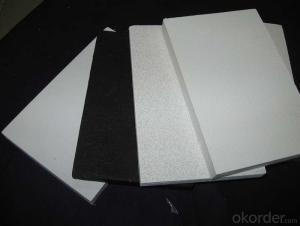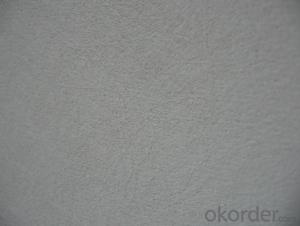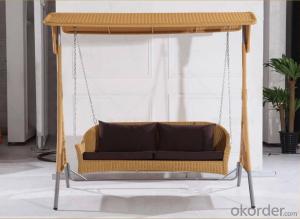White Aluminum Plate
White Aluminum Plate Related Searches
Led Light Bulbs For Ceiling Fixtures Led Lamps For Ceiling 42 In Ceiling Fan With Light Aluminum Coil Stock For Gutters Hole Saw For Aluminum Plate Aluminum Tread Plate For Trailer Bow Plate For Aluminum Boat Max Temp For Aluminum Foil Aluminum Foil For Key Fob Aluminum Foil For Hair FrizzHot Searches
Fiberglass Scaffolding For Sale Fiberglass Panels For Sale Fiberglass Greenhouses For Sale White Gazebo For Sale White Melamine Board Price Ceiling Fan Lowest Price White Plastic Folding Chairs Wholesale Company Office Design Stock Price For Aluminum Aluminum Coil Stock For Sale Aluminum Gutter Coil For Sale Used Aluminum Scaffolding For Sale 1/4 Aluminum Plate For Sale Aluminum Bar Stock For Sale Aluminum Round Stock For Sale Aluminum Diamond Plate For Sale Aluminum Scaffolding For Sale Craigslist 6061 Aluminum Plate For Sale Aluminum Dock Plate For Sale 7075 Aluminum Plate For SaleWhite Aluminum Plate Supplier & Manufacturer from China
Okorder.com is a professional White Aluminum Plate supplier & manufacturer, offers integrated one-stop services including real-time quoting and online cargo tracking. We are funded by CNBM Group, a Fortune 500 enterprise and the largest White Aluminum Plate firm in China.Hot Products
FAQ
- Yes, aluminum sheets are suitable for use in food processing and packaging industries. Aluminum is a versatile and widely used material in the food industry due to its excellent properties and advantages. Firstly, aluminum is a non-toxic material, making it safe for direct contact with food. It does not react with food or alter its taste, ensuring the preservation of the original flavor and quality. This is particularly important in the packaging industry, as it helps to maintain the freshness and integrity of the food product. Secondly, aluminum has excellent thermal conductivity, which allows for efficient and even heat distribution during food processing. This property is beneficial for cooking, baking, and other thermal processes, ensuring that food is cooked or processed evenly. Additionally, aluminum sheets offer excellent barrier properties, such as resistance to moisture, light, and gases. This helps to protect food from external factors that could potentially deteriorate its quality, such as moisture or oxygen. It also helps to prolong the shelf life of packaged food products. Furthermore, aluminum sheets are lightweight, yet strong and durable. This makes them easy to handle and transport in food processing and packaging operations. Their strength and durability ensure that the packaging remains intact and protects the food during transportation and storage. Lastly, aluminum is a sustainable material. It is 100% recyclable, meaning that it can be reused without losing its properties. This helps to reduce the environmental impact and supports the circular economy. In conclusion, aluminum sheets are highly suitable for use in the food processing and packaging industries. Their non-toxic nature, thermal conductivity, barrier properties, lightweight yet strong characteristics, and sustainability make them an ideal choice for ensuring the safety and quality of food products.
- why is aluminium used instead of copper for high voltage electrical cables????
- Aluminium provies much better conductivity to weight ratio meaning copper is ofcourse the better conductor but it is also a lot heavier than aluminum aluminium is 2.74g/cm? and copper is 8.64 g/cm? soo copper is three times as heavier and if you used that in cables it would be reallly messed up and dangerous and costly as you would need better material or infrastructure to hold the copper wire in air compared to aluminium which is easy to hold in air and is less dense and would be suitable for electrical cables
- Aluminum sheets are known for their excellent creep resistance. Creep is the tendency of a material to slowly deform under a constant load over time. Compared to other metals, such as steel, aluminum has a relatively low creep rate, meaning it deforms at a slower rate under the same load and temperature conditions. This makes aluminum sheets suitable for applications requiring dimensional stability and resistance to long-term deformation. Additionally, aluminum's low creep resistance allows it to withstand high temperatures without significant deformation, making it suitable for use in various industries, including aerospace, automotive, and construction. However, it is important to note that the creep resistance of aluminum sheets can vary depending on the alloy used, heat treatment, and other factors, so it is essential to choose the appropriate aluminum alloy and design for specific applications to optimize creep resistance.
- What advantages does the ceramic panel curtain wall have compared with the aluminum sheet and stone curtain wall?
- The color of aluminum sheet is single, the quality is not high; the price of stone is high; the color difference is serious; the radiation is not environmental; and the resource is limited; the supply is difficult to guarantee; the weight of the tile is light; the radiation is zero; the pollution resistance is strong. Rich in color, especially in the production process, forms of diversification, to meet high, medium and low-end customer base needs. Zhejiang ruigao company is China and Asia's first introduction of the ceramic plate production line, their R & D capability is recognized. The pursuit of perfection, the introduction of new ideas, and the concept of customization for architects to realize their dreams and fashion designs for the architecture have opened wider space for the wide application of ceramic panels and curtain walls. In fact, the application of ceramic is not limited to curtain wall, but also applied to the lighting effect display, interior decoration and so on. Hi! In short, there are any problems can be exchanged with each other.
- Yes, aluminum sheets can be used for reflective purposes. Aluminum is a highly reflective metal that has a shiny and smooth surface. It has a high reflectivity index, making it an excellent material for reflecting light and heat. Aluminum sheets are commonly used for various reflective applications, such as in mirrors, solar panels, lighting fixtures, and insulation. Due to its reflective properties, aluminum sheets are also used in the construction industry to increase energy efficiency by reflecting sunlight and reducing heat absorption.
- How to distinguish fluorocarbon spraying and powder spraying aluminium plate
- 3, powder coating is spraying equipment (electrostatic spray machine) the powder coating is sprayed onto the surface of the workpiece under the electrostatic interaction, the powder will be uniformly adsorbed on the surface of the workpiece, the formation of powder coating; powder coatings after high temperature baking leveling curing, into effect (different effect of different kinds of powder coatings in the final) powder coating; spraying effect on mechanical strength, adhesion, corrosion resistance, aging resistance and superior cost in spray painting process, under the same effect.
- There are several different types of finishes that are commonly available for aluminum sheets. These finishes are applied to the surface of the aluminum to enhance its appearance, protect it from corrosion, and improve its durability. One of the most common types of finishes is the mill finish, which is the natural finish that is achieved after the aluminum has been extruded or rolled. This finish has a smooth and shiny appearance, but it is not as resistant to corrosion as some of the other finishes. Another type of finish is the brushed finish, which is achieved by brushing the surface of the aluminum with a fine abrasive material. This creates a pattern of fine lines on the surface, giving it a unique and textured appearance. Brushed finishes are commonly used in architectural applications and can also help to hide scratches and other imperfections. Anodizing is another popular finish for aluminum sheets. This process involves immersing the aluminum in an electrolytic bath and applying an electric current to it. This causes a layer of aluminum oxide to form on the surface, which provides excellent corrosion resistance and can be dyed in various colors for aesthetic purposes. Powder coating is another commonly used finish for aluminum sheets. In this process, a dry powder is sprayed onto the surface of the aluminum and then heated to form a durable coating. Powder coating is available in a wide range of colors and finishes, including matte, glossy, and textured. Finally, there is the painted finish, which involves applying a liquid paint to the surface of the aluminum. This finish offers a high level of customization, as it is available in virtually any color and can be applied in various patterns and textures. Overall, the choice of finish for aluminum sheets depends on the specific requirements of the application, such as aesthetics, corrosion resistance, and durability. Each finish offers its own unique advantages and can greatly enhance the appearance and performance of aluminum sheets.














































